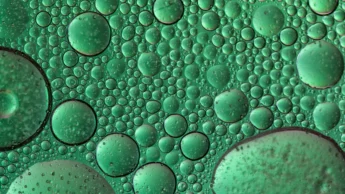In the ongoing search for renewable energy sources, waste heat is increasingly emerging as a valuable, albeit often untapped, resource in our efforts to create a greener future. Generated as a by-product of various industrial processes, this heat offers a wealth of opportunities for practical applications beyond traditional energy sources.
In this blog, we take you on a journey through innovative ways to harness waste heat and discover how this leftover heat can play a key role in promoting sustainability and efficiency. From heat grids to green data centres; in this blog we look at the ways in which waste heat can be used.
Do you want your innovation to make it easier to meet ESG targets? Would you like to develop your idea in collaboration with Beeliners? We would love to help you! Feel free to drop by for a cup of coffee and we will be happy to discuss the possibilities with you.
By embracing practical applications of waste heat, we can jointly strive for a more sustainable future. From local initiatives to large-scale implementations; the possibilities are diverse and offer a promising perspective for an energy-efficient society.
1. Heat grids
An effective way to use waste heat is through heat networks. These networks transport heat from the source (e.g. an industrial plant) to different users, such as homes, businesses and institutions. By sharing and distributing heat, energy efficiency is increased and even whole neighbourhoods can be supplied with sustainable heat without depending on fossil fuels.

2. Industrial Process Optimisation
Within industries, companies can use waste heat to optimise their own processes. By reusing this heat for heating production buildings, water heating or even electricity generation, a closed system of energy reuse is created. This not only leads to cost savings, but also reduces the ecological impact of industrial activities.
3. District Heating
District heating uses waste heat to provide heat to entire cities. This concept embraces the idea that heat is a common resource that can be shared. By using strategically placed heat sources, district heating systems can cover a significant part of the energy demand without any additional burden on the environment.
4. Heat pumps
Heat pumps offer an innovative approach to utilising waste heat. They can upgrade low-temperature waste heat to a level suitable for heating applications. This upgrading process increases the diversity of applications for waste heat, further enhancing its potential.
5. Green data centres
In the world of information technology, green data centres can harness waste heat for cooling. Using the heat generated by server equipment for heating purposes instead of disposing of it creates a more sustainable and efficient use of energy in this fast-growing sector.
Working on your ESG-innovation together with Beeliners
Do you have a good idea for a product, service, process or technological innovation that makes it easier to achieve ESG goals? And would you like to develop your idea in collaboration with Beeliners? Beeliners has an innovation cell dedicated to innovations in energy and heating systems. Feel free to drop by for a cup of coffee and we will be happy to discuss the possibilities with you.
Also interesting
-

How will the production of green gas be encouraged?
In an era when the world is paying increasing attention to renewable energy sources, green gas is a promising alternative that has the potential to reduce our dependence on fossil fuels. Green gas, also known as biomethane, is produced from organic material such as green waste, sewage sludge, or even… Read More
-

What is bio-energy?
In an era when the urgency of renewable energy sources is becoming increasingly prominent, bioenergy takes centre stage as a promising and environmentally friendly solution. This renewable form of energy, derived from biological sources such as plants, offers a range of possibilities for reducing our dependence on fossil fuels and… Read More
-

This will encourage the use of renewable energy
In a world where the calls for sustainability and environmental awareness are getting louder, the use of renewable energy sources is central to the fight against climate change. While individual efforts by citizens and businesses play an important role, a crucial responsibility rests on governments worldwide to accelerate the transition… Read More

